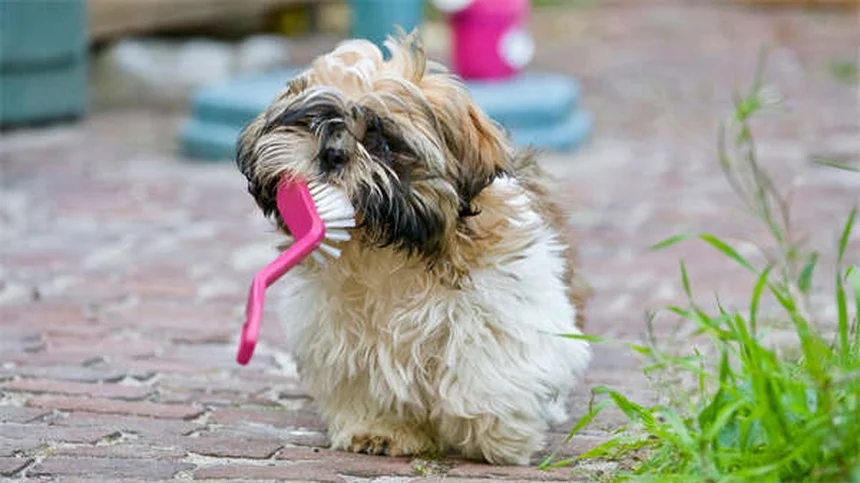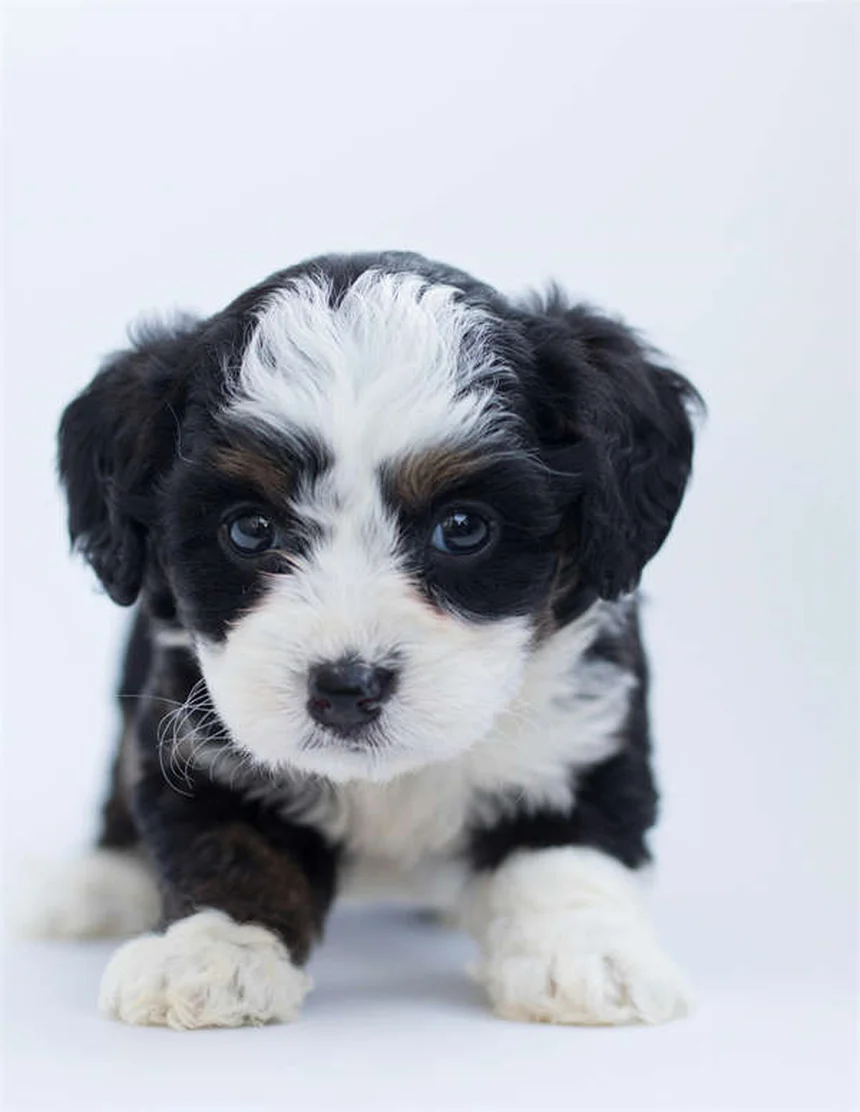How to kitten-proof your home? The answer is simple: you need to think like a curious kitten! I've helped dozens of new cat owners create safe spaces, and let me tell you - those little furballs can find trouble in places you'd never expect. Kitten-proofing isn't just about protection, it's about creating an environment where your new family member can explore safely.Here's the deal: kittens see your home as one giant playground. Electrical cords? Chew toys. Toilets? Drinking fountains. That cozy spot behind the fridge? Perfect nap location. We'll walk through each potential danger zone together, from electrical hazards to hidden household toxins. By the time you're done reading, you'll be ready to welcome your kitten with confidence!
E.g. :Bacterial Skin Infections in Cats: Symptoms, Treatment & Prevention
- 1、Preparing Your Home for a Kitten
- 2、Water and Stair Hazards
- 3、Common Household Dangers
- 4、Holiday and Seasonal Hazards
- 5、Essential Kitten-Proofing Products
- 6、Final Safety Checks
- 7、Beyond the Basics: Advanced Kitten Safety
- 8、The Great Outdoors: Balcony and Window Safety
- 9、Socialization and Multi-Pet Households
- 10、Nutrition and Feeding Safety
- 11、Playtime Safety
- 12、Travel and Vet Visit Prep
- 13、FAQs
Preparing Your Home for a Kitten
The Ultimate Kitten-Proofing Guide
You're about to bring home an adorable ball of fluff! But wait - your house is currently a kitten danger zone. Those tiny paws can get into more trouble than you'd expect. Let me walk you through everything you need to do before your new fur baby arrives.
Did you know kittens can fit into spaces only 2 inches wide? That means we need to think like a curious kitten when preparing your home. I've helped dozens of friends kitten-proof their places, and here's what really works.
Electrical and Cord Safety
Those dangling wires behind your TV? Kitten magnets. I've seen kittens chew through phone chargers in minutes. Here's how to protect both your electronics and your new pet:
First, invest in cord covers - they're like little tunnels that hide and protect wires. You can find them at any pet store or home improvement center. For areas with lots of cords (like behind entertainment centers), consider using a cord management box. Remember: exposed cords aren't just dangerous for chewing - they can strangle a playful kitten too.
Water and Stair Hazards
 Photos provided by pixabay
Photos provided by pixabay
Bathroom Dangers
Ever seen a kitten try to drink from a toilet? It's cute until you realize they could fall in and drown. Here's what you need to know:
Toilet lid locks are inexpensive and easy to install - they work just like the child-proof versions. While you're at it, keep bathroom doors closed when not in use. That fancy scented soap on the counter? Probably toxic to kittens. And those hair ties you leave everywhere? Major intestinal blockage risk if swallowed.
Stair Safety Solutions
Have you ever watched a kitten try to navigate stairs? It's equal parts hilarious and terrifying. Those little legs aren't ready for steep drops yet.
Pet gates are your best friend here. Look for ones with narrow vertical bars (horizontal ones become kitten ladders). For open-concept homes, you might need to get creative with temporary barriers. Pro tip: Place soft rugs or mats at the bottom of stairs just in case of tumbles.
Common Household Dangers
Kitchen Catastrophes
Your kitchen is basically a kitten booby trap. From the garbage can to the fridge, dangers lurk everywhere.
Let's talk trash first. A standard open trash can is like a kitten buffet - and not in a good way. Chicken bones, coffee grounds, onion skins - all potentially deadly. Get a can with a secure, locking lid. Better yet, keep it under the sink with a child-proof lock.
Now about appliances: always do a kitten check before closing the fridge or starting the dishwasher. I can't tell you how many times I've found kittens curled up in warm dryer vents!
 Photos provided by pixabay
Photos provided by pixabay
Bathroom Dangers
Your cozy living room hides more dangers than you might think. Here's what to watch for:
Blind cords are silent stranglers. Either tie them up high or use cord wraps. That pretty houseplant? Probably poisonous. And those decorative pillows with tassels? Irresistible chew toys that can cause intestinal blockages.
Here's a quick comparison of common household items and their kitten risks:
| Item | Risk Level | Solution |
|---|---|---|
| Electrical cords | High | Cord covers |
| Toilets | Medium | Lid locks |
| Houseplants | Varies | Research toxicity |
Holiday and Seasonal Hazards
Decorations and Celebrations
Think tinsel is just shiny and fun? Think again! To a kitten, it's the ultimate plaything - and potential death trap.
Holiday decorations require extra vigilance. That beautiful Christmas tree? Basically a giant scratching post with dangerous ornaments. Here's what to do: secure the tree base, avoid tinsel completely, and place breakable ornaments higher up. Candles? Always supervised or better yet, use battery-operated ones.
Seasonal Changes
You know what's worse than a kitten knocking over your pumpkin spice candle? A kitten with third-degree burns.
As seasons change, so do the dangers. Summer brings open windows (install screens!), fall means toxic plants like lilies, winter has antifreeze puddles, and spring brings cleaning chemicals out of storage. Each season requires its own kitten-proofing checklist.
Essential Kitten-Proofing Products
 Photos provided by pixabay
Photos provided by pixabay
Bathroom Dangers
Wondering what products are actually worth buying? I've tested them all so you don't have to waste money.
The absolute essentials include: cord protectors, cabinet locks, a secure trash can, and pet gates. Nice-to-haves include furniture corner guards (for those crazy kitten zoomies) and outlet covers. Save your money on fancy "kitten proofing kits" - they often contain items you'll never use.
DIY Solutions That Work
Not everything requires a trip to the store. Some of the best kitten-proofing is free!
Empty paper towel tubes make great cord organizers. Old towels can pad sharp furniture corners. And that box you were going to recycle? Instant kitten distraction that keeps them away from real dangers. The key is thinking like a kitten - if it moves, fits in their mouth, or makes noise, they'll investigate.
Final Safety Checks
The Kitten Eye View
Here's a fun exercise: get down on your hands and knees and crawl around your home. See that loose thread under the couch? Potential hazard. That gap behind the bookshelf? Kitten hideout.
This perspective shift helps identify dangers you'd never notice standing up. Pay special attention to areas behind furniture and appliances - kittens love tight spaces. And remember: if you can fit two fingers in a gap, a kitten can squeeze through.
Emergency Preparedness
What's worse than a kitten in danger? Not knowing what to do when it happens.
Keep your vet's number programmed in your phone and posted on the fridge. Know the location of the nearest 24-hour animal hospital. Have a pet first-aid kit ready (you can make your own with gauze, antiseptic, and a pet thermometer). Preparation could save your kitten's life.
Still feeling overwhelmed? Start with one room at a time. The bathroom is usually the easiest to kitten-proof first. Before you know it, your home will be a safe playground for your new furry friend!
Beyond the Basics: Advanced Kitten Safety
The Hidden Dangers of Everyday Items
You've covered the obvious hazards, but let's talk about the sneaky stuff that might surprise you. Rubber bands and hair ties seem harmless, right? Wrong! These stretchy little devils can cause life-threatening intestinal blockages if swallowed. I once spent $2,000 on emergency surgery because my kitten Misty couldn't resist playing with a hair tie.
Here's something you might not have considered - your laundry habits. Those dryer sheets? Toxic to kittens. The lint trap? A perfect hiding spot for curious felines. And never underestimate a kitten's ability to climb into a washing machine - always check before starting a load!
Creating Safe Vertical Spaces
Kittens are natural climbers - it's in their DNA. But your bookshelf isn't exactly designed for feline acrobatics. So how do we satisfy their climbing instincts safely?
The answer is simple: invest in cat trees and wall-mounted shelves specifically designed for cats. These provide safe climbing opportunities while protecting your furniture. Place them near windows for bonus entertainment value. Remember to secure any freestanding cat trees to the wall - kittens can be surprisingly strong when they get the zoomies!
The Great Outdoors: Balcony and Window Safety
Balcony Protection Strategies
Fresh air is great, but an open balcony is a kitten catastrophe waiting to happen. Even if you're on the first floor, those railings often have gaps wide enough for a kitten to slip through.
The solution? Cat netting or plexiglass barriers. They're relatively inexpensive and easy to install. Just make sure the material is durable enough to withstand tiny claws. And never leave your kitten unsupervised on the balcony - it only takes a second for a bird or butterfly to trigger their hunting instincts.
Window Wisdom
We all love watching kittens gaze out windows, but standard window screens aren't kitten-proof. Most screens can be pushed out with minimal pressure - I learned this the hard way when my kitten Oliver took a dive from the second floor (thankfully he was fine).
Consider installing pet-safe window guards or reinforced screens. And always keep windows locked when you're not home to supervise. For ground-level windows, you might also want to check for toxic plants growing outside that your kitten could reach through the screen.
Socialization and Multi-Pet Households
Introducing Other Pets
Got a dog? Another cat? A grumpy parrot? Introducing a kitten to existing pets requires careful planning. The key is gradual, supervised introductions - don't just throw them together and hope for the best.
Start with scent swapping (use blankets or toys to exchange smells) before any face-to-face meetings. When you do introduce them, keep the kitten in a carrier at first so everyone can sniff safely. Watch for signs of stress in all animals involved - flattened ears, hissing, or excessive hiding mean you need to slow down the process.
Handling Visitors
Friends and family will want to meet your new kitten, but too much attention too soon can be overwhelming. Ever seen a kitten panic when five people try to pet it at once? It's not pretty.
Create a quiet "safe room" where your kitten can retreat when things get too hectic. Teach visitors to approach slowly and let the kitten come to them. And please, no matter how cute they are, don't let kids chase or pick up the kitten without supervision - those tiny bones are fragile!
Nutrition and Feeding Safety
Food Storage Solutions
Kitten food smells delicious... to your kitten! Those plastic bags and cardboard boxes won't stand a chance against determined little teeth. I once came home to find my kitten Charlie covered in kibble after chewing through an entire bag.
Invest in airtight, chew-proof containers for both dry and wet food. Metal or thick plastic bins with secure lids work best. Store them in a cabinet with child-proof locks - yes, kittens can open cabinets! And never leave food out where your kitten can gorge themselves - free-feeding leads to obesity and digestive issues.
Toxic Human Foods
We all want to share snacks with our furry friends, but many human foods are dangerous for kittens. Here's a quick reference table:
| Food | Danger Level | Symptoms |
|---|---|---|
| Chocolate | Extreme | Vomiting, seizures |
| Onions/Garlic | High | Anemia |
| Grapes/Raisins | Moderate | Kidney failure |
Remember, kittens are especially vulnerable because of their small size. Even a tiny amount of these foods can cause serious harm. When in doubt, stick to kitten-formulated treats!
Playtime Safety
Choosing the Right Toys
Not all cat toys are created equal. Those cute little mice with plastic eyes? Choking hazards. String toys? Great for play, but never leave them out unsupervised - kittens can swallow string and develop serious intestinal issues.
Look for toys specifically labeled as kitten-safe. Soft toys without small parts are best for young cats. Wand toys are fantastic for interactive play, just be sure to put them away after use. And please, no laser pointers without a physical toy to "catch" at the end - frustrated hunting instincts lead to stress.
Supervised Play Techniques
Playtime is crucial for kitten development, but it needs boundaries. Never use your hands as toys - those cute little nips won't be so cute when your kitten grows up thinking fingers are fair game!
Schedule multiple short play sessions throughout the day (kittens have short attention spans). Watch for signs of overstimulation like twitching tails or flattened ears. And always end playtime with a small meal or treat - this mimics the natural hunt-eat-groom-sleep cycle of wild cats.
Travel and Vet Visit Prep
Carrier Training
Most kittens associate carriers with scary vet visits, but it doesn't have to be this way! Start carrier training early by leaving it out with cozy bedding inside. Toss treats in occasionally so your kitten explores it voluntarily.
For car rides, secure the carrier with a seatbelt and cover it with a light blanket to reduce stress. Never let your kitten roam free in the car - it's dangerous for both of you! And pro tip: line the carrier with puppy pads in case of accidents.
Creating a Vet-Friendly Environment
Vet visits are stressful, but you can make them easier. Get your kitten used to being handled by gently touching their paws, ears, and mouth regularly. This makes exams much smoother.
Bring familiar-smelling blankets or toys to the vet's office. Ask if you can wait in an exam room instead of the busy waiting area. And always reward with treats after the visit - positive associations matter!
E.g. :Kitten proofing your home : r/cats
FAQs
Q: What are the most dangerous areas to kitten-proof first?
A: The kitchen and bathroom should be your top priorities when kitten-proofing. These rooms contain multiple hazards like toxic cleaning products, electrical appliances, and drowning risks. I always tell new kitten parents to start with securing trash cans (kittens love digging through garbage), covering electrical cords, and installing toilet lid locks. Don't forget about under-sink cabinets - use childproof locks to keep curious paws out. The living room comes next with its tempting blind cords and houseplants. Remember: kittens can squeeze into spaces barely 2 inches wide, so think small when checking for hazards.
Q: How can I protect my kitten from electrical cords?
A: Electrical cord protection is one of the most important kitten-proofing steps. Here's what works best: use PVC cord covers or spiral cable wraps (available at pet stores) to encase loose wires. For entertainment centers with multiple cords, I recommend a cord management box. If you're crafty, you can even make DIY protectors from PVC pipes cut lengthwise. Pro tip: apply bitter apple spray to cords as an extra deterrent - kittens hate the taste but it's completely safe. Never rely on tape alone, as kittens will chew right through it.
Q: Are houseplants dangerous for kittens?
A: Many common houseplants are extremely toxic to kittens, even in small amounts. Lilies, for example, can cause kidney failure with just a few nibbles. Other dangerous plants include pothos, dieffenbachia, and philodendron. Before bringing your kitten home, research every plant in your house using ASPCA's toxic plant database. When in doubt, move plants to hanging baskets or rooms your kitten can't access. Warning signs of plant poisoning include drooling, vomiting, or lethargy - if you see these, contact your vet immediately.
Q: What household items should I lock away from my kitten?
A: Your kitten-proofing checklist should include securing these common household dangers: medications (even in childproof bottles), cleaning supplies, sewing kits (thread can cause intestinal blockages), rubber bands, plastic bags, and small decorative items. Use childproof cabinet locks for under-sink storage. Pay special attention to laundry areas - kittens love hiding in warm dryers! I recommend doing a "kitten crawl" - get on your hands and knees to spot hazards at their eye level. You'll be amazed what you discover from this perspective.
Q: How can I make stairs safe for my kitten?
A: Stair safety is crucial, especially for young kittens still developing coordination. Install pet gates with vertical bars (horizontal bars become ladders) at both top and bottom. For open-concept homes, consider temporary mesh barriers. Place soft rugs or mats at the bottom to cushion any falls. During the first few weeks, supervise stair use and consider carrying your kitten up and down until they're more confident. Fun fact: kittens typically master stairs around 10-12 weeks old, but always err on the side of caution.

